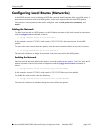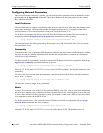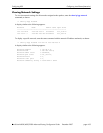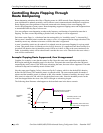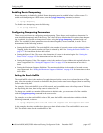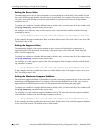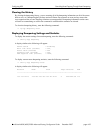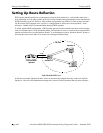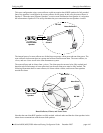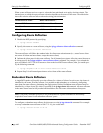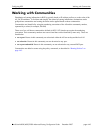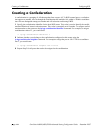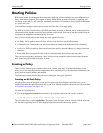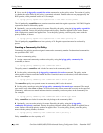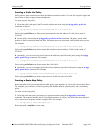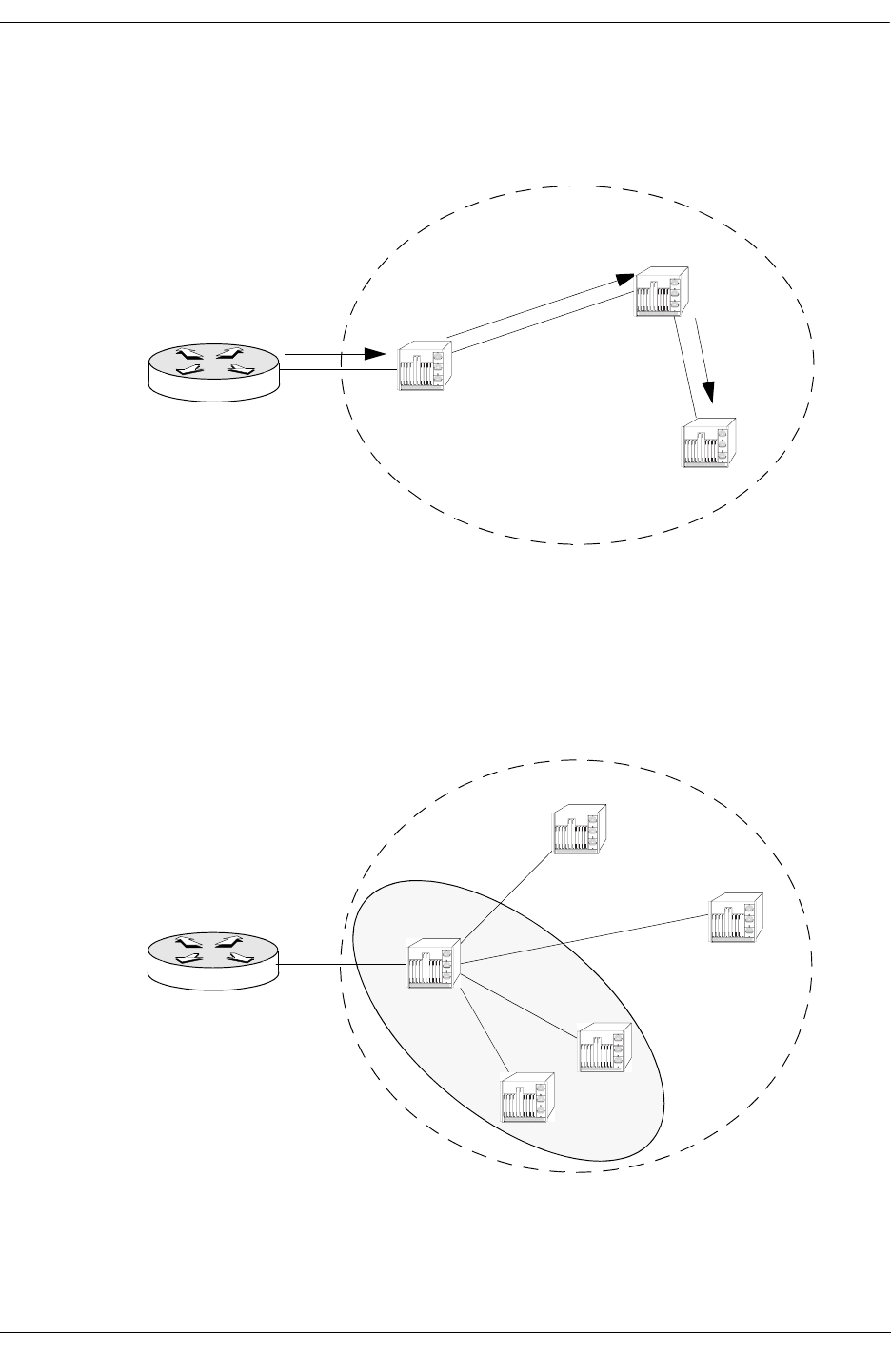
Configuring BGP Setting Up Route Reflection
OmniSwitch 6800/6850/9000 Advanced Routing Configuration Guide December 2007 page 4-41
This same configuration using a route reflector would not require that all BGP speakers be fully meshed.
One of the speakers is configured to be a route reflector for the group. In this case, the route reflector is
Speaker C. When the route reflector (Speaker C) receives route information from Speaker A it advertises
the information to Speaker B. This set up eliminates the peer connection between Speakers A and B.
The internal peers of a route reflector are divided into two groups: client peers and non-client peers. The
route reflector sits between these two groups and reflects routes between them. The route reflector, its
clients, and non-clients are all in the same autonomous system.
The route reflector and its clients form a cluster. The client peers do not need to be fully meshed (and
therefore take full advantage of route reflection), but the non-client peers must be fully meshed. The
following illustration shows a route reflector, its clients within a cluster, and its non-client speakers
outside the cluster.
Route Reflector, Clients, and Non-Clients
Note that the non-client BGP speakers are fully meshed with each other and that the client speakers in the
cluster do not communicate with the non-client speakers.
External BGP
Speaker
Client A
Client B
AS 100
Route
Route Reflector
Cluster
Route
Client
Client
AS 100
Non-Client
External BGP
Speaker
Non-Client



